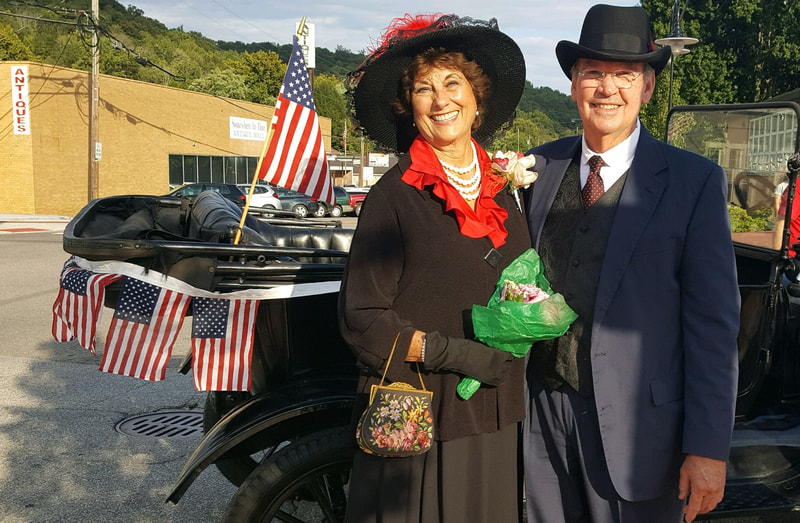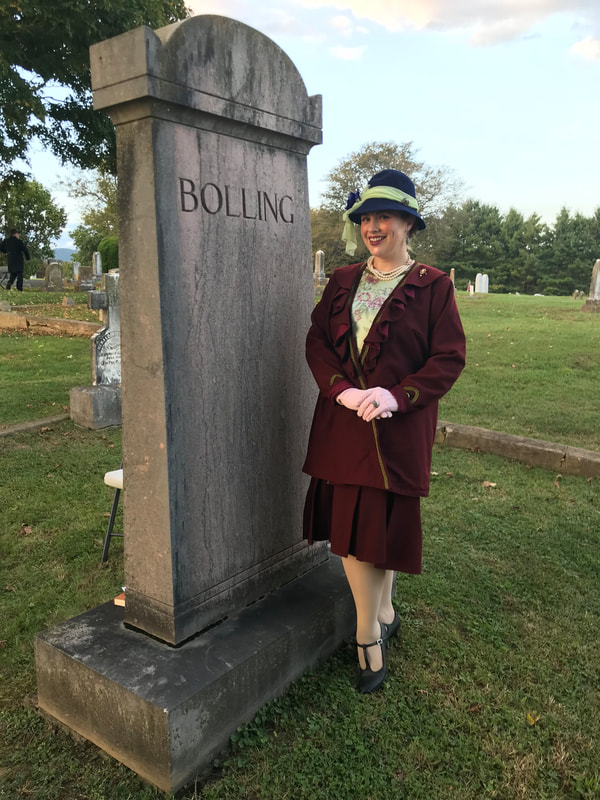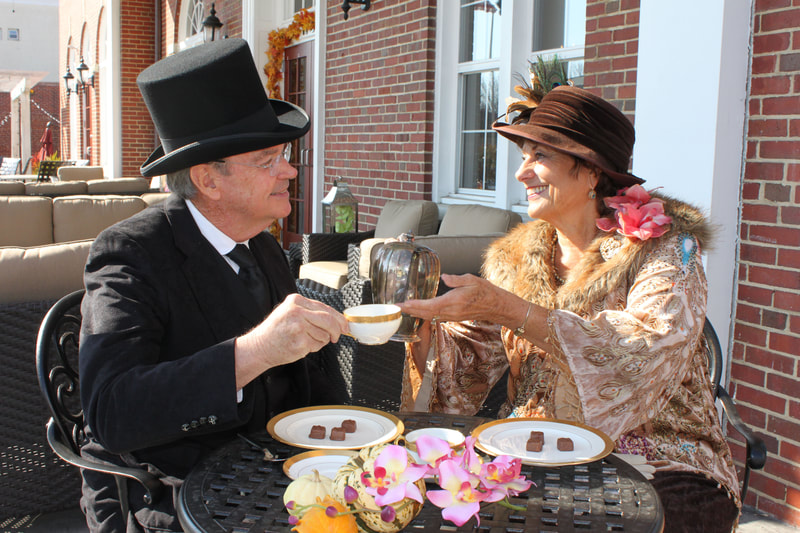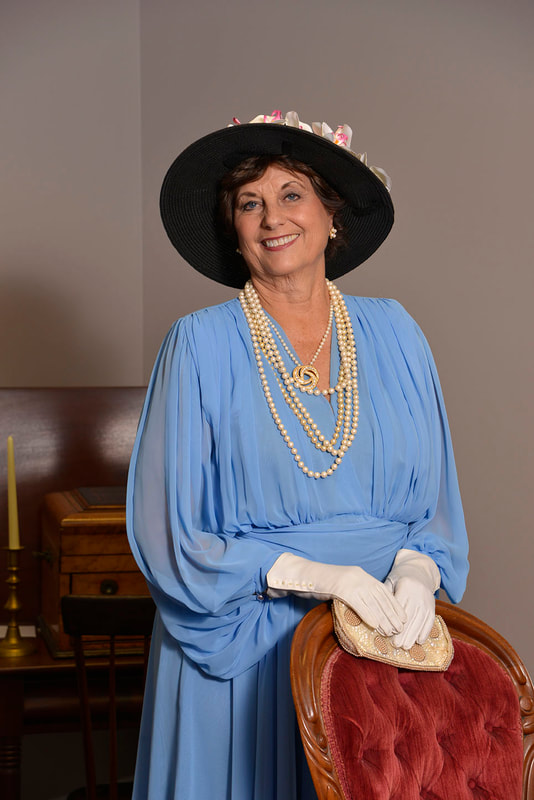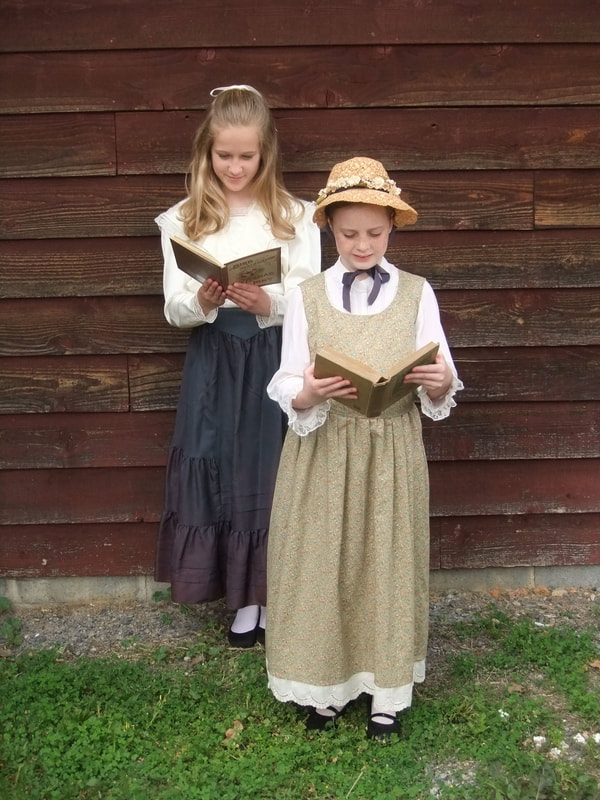|
For our first installation of “Bolling Building Stories,” we take a look at Green “Tot” Chapman, who operated a Barbershop in one of the lower level storefronts of the Bolling Building at the turn of the twentieth century. A special thanks to local historian, John Johnson, who brings us this story. Green “Tot” Chapman: A Black Barber on Main Street, Wytheville, Virginia By: John M. Johnson Green Chapman was born in Pulaski County, Virginia, in June of 1852[1]; other records state that he was born in 1857. He was the son of Doddridge Chapman and Tishey Hendrick Chapman.[2] Green married Emma Miller on May 22, 1879.
We are not sure when Green came to Wytheville from Newbern but we are sure he was there when Newbern was still the county seat of Pulaski County. The early Chapman’s played a great part in the organization of Newbern. By 1865 Newbern’s black population was thriving. Paul Huskins, Henry Peck, Jon Cox, James Ingram, David Rodgers, Doddridge Chapman, and Daniel Hall, made the first black land transaction to purchase land on which an Methodist Church and School building was constructed. The church was built on the land several years before the transaction (a deed signed) to purchases the property.[4] It was in the publication (A History of Slaves and Freedom in Nineteenth Century Pulaski County, Virginia) where the name Doddridge Chapman was found. He was listed as being born about 1846. Doddridge also had a known brother whose name was Parish. He (Doddridge) was the father of Green “Tot” Chapman, the subject of the research. Although we say that Doddridge Chapman was the father of Green, there were no other mentioned children found for Doddridge other that Green in the census. Other children of Dodd’s could have been on the 1866 Freedmen’s co-habitation list and left the home before the Federal United States Census. However, when Green died on February 29, 1928, “Dod” Chapman was named to be his father.[5] Doddridge was also the father of several other children who were all employed in early Newbern, Virginia; their names were not mentioned in the census. His other sons (to include Green) were leather workers; making horse harness, boots and shoes.[6] The small community of African-Americans at Newbern thrived well shortly after the freedom until the coming of the twentieth century. However, after 1900, young people began to leave; they found employment elsewhere. By 1900 there were only twelve elderly black families remaining in Newbern, Virginia.[7] The date or year is not know when the Chapman’s left Pulaski County, however, Doddridge Chapman died on September 11, 1881, [8] and by the time of his death, all of his children had departed and found homes in other parts of America. However, at least one of Doddridge son’s found his way to Wytheville. We know that Green “Tot” Chapman was here in 1879, because he married Emma Miller on May 22nd in that year. In June of 1880 he and his wife Emma were living in the William Terry abode on Washington Street where Green was employed as a common laborer. Both Green and Emma were twenty-four years old.[9] On April 16, 1885, Green’s name along with the story of one of his adventures appeared in the Wytheville Dispatch a local newspaper. The story is as follows: “Tot Chapman, the manager of the barbershop first door east of T. P. Wappett’s grocery, while fishing last Saturday in Reed Creek, at the upper edge of the meadows on this side of Mr. Yates’ fastened his hook in something which he says felt soft. Knowing that his line was an inferior one he gave it a sudden jerk thinking of course it would break, but to his astonishment it did not, and when he pulled it out he found the hook to be filled with what he supposed to be human hair. He brought the hair to town and had it examined by some physician who pronounced it such. The town authorities sent some parties down to the creek last Saturday and again on Tuesday, and had it well dragged, but they found nothing. When the hair, which was perfectly black seemed inclined to curl, was shown on the streets many believed it was from the head of someone who had been murdered and thrown into the creek.” [10] The article above not only told of Chapman adventure, it mentioned the location of the barbershop where he was employed as a manager. We now know that Chapman was part of a group of barbers perhaps employed in Peter Wilson Gibson (1835-1815) barbershop as early as April 1885. Gibson was a free born and had lived in Wytheville from birth.[11] Gibson’s name appeared in the census as early as 1860 as a “barber.” Legends state that the Chapman family came to Wytheville (during slavery) from Pulaski County, with the Elbert Lee [E. Lee] Trinkle family. We now know that this is not true because there were still members of the Trinkle family in Pulaski County in 1880, to include Elbert S. Trinkle the father of Elbert Lee. Green Chapman, the subject of this research arrived in Wytheville about 1883. Also, Elbert Lee [E. Lee] Trinkle was born until 1878; thirteen years after the freedom of slaves and the War Between the States.[12] However, there is a hint about a Trinkle and Chapman connection. When Green died on February 29, 1928, the names his parent were given on his certificate of death. The certificate lists his mother to be “Lettie Trinkle.” We must be hesitant to say that Lettie was a Trinkle slave because no proof has been found to substantiate that claim. The name Lettie could also be short for “Latisha.” More information is needed before the Trinkle / Chapman dilemma can be solved. Nothing more will be said about this subject. Green “Tot” Chapman and his wife Emma were the parents of the following children: Charles Royal Chapman 1881-1928, Garland Chapman 1883 - 1985, Floyd Robinson Chapman 1887-1947 and James A. Chapman 1895 – 1962. Garland and Floyd followed in the footsteps of their father and were barbers. We know from the news article on page two that the barbershop which Green managed between 1885 and 1900 was located on West Main Street, just East of T. P. Wappet’s grocery store. This grocery store was located west of the present U. S. Post Office. The barbershop was located about where the Southwest Virginia Enterprise newspaper establishment is at present. Perhaps this was the same barbershop which was broken into on September 4, 1891. The following article appeared in the Richmond Times: “Another half-grown colored boy broke into “Tot Chapman’s” barber-shop in Wytheville Sunday and took ten dollars. He is also in jail.[13]” About one year later, on August 2, 1892, a “Bill of Complaint” was introduced in Wythe County Chancery Court; Green Chapman was suing his wife Emma Miller Chapman for a divorce. According to court records, it appeared that Emma had “deserted the Chapman home taking with her the youngest child aged about nine months.” To make a long story short, Green won the case. In a September 4, 1892, decree, Green Chapman was granted a divorce from Emma.[14] We are not sure if Green remarried again to second woman by the name of Emma. There was no marriage license found to substantiate such claim. However, Emma must have been permitted to return back to the home, because her name appears in the 1900, 1910 and 1920 census living in the “Tot” Chapman household, she lived there until her death on June 25, 1923, she was fifty-nine years old.[15] Because of the difficulty in obtaining records to prove one brought license to open a barbershop in the Town of Wytheville. There was no attempt to find the license or the date when Chapman applied for a permit to operate a shop, in the Town of Wytheville record book for 1900. In the same year, we know that he was operating his own barbershop in what is known as the Bolling Building on Main Street in Wytheville. Chapman Barbershop was referred as the “Sanitary Barbershop.” In the 1910 Green Chapman had employed one of the sons in the shop. Charles Royal Chapman was born in 1881 and worked in the “Sanitary Barbershop” until his death on June 11, 1928; he was forty-seven years old.[16] James A. Chapman, another son of Green enlisted in the U.S. Army during WW-I on October 2, 1917.[17] After his discharge from the military from the 317th Engineers on March 31, 1919,[18] he too worked in his father’s barbershop. However, this was short lived. Perhaps military life directed James in another direction because on April 7, 1930, he was employed as an automobile mechanic. After the death of Green, the Sanitary Barbershop was sold to Matthew Gray. Matthew operated the shop until his death in 1932. As for the sons of Green Chapman, James A. Chapman commenced working at the George Wythe Hotel which was constructed in 1927. James A. Chapman commenced his employment there between 1930 and 1940. He remained employee as a “bellhop” until he retired. James died on September 2, 1962.[19] A note about Matthew Gray: Matthew was born in Wythe County, in August 1973 the son of James and Mar Lyles. He was born with a birth defect in his left leg which was three inches shorter that the right. The foot on the left leg was turned outwards 90 degrees to his right foot. He stood on a specially made a3 inches high box to contemplate for the shortness of that leg. Mr. Gray passed on March 20, 1932 and is buried in the Oakwood Memorial Garden Cemetery.[20] NOTES [1] Gravestone at the Oakwood Cemetery, Wytheville, Virginia. Hereafter Oakwood. [2] Certificate of Death Commonwealth of Virginia. Hereafter certificate. [3] Certificate. [4] Killen, Linda, A History of Slaves and Freedom in Nineteenth Century Pulaski County, Virginia, Department of History, Radford University May 1996. p. 90. [5] Certificate of Death for Green Chapman in the possession of the compiler [6] 1880 United States Federal census, Pulaski County, Virginia, Newbern Township, p. [7] Killen, Linda, A History of Slaves and Freedom in Nineteenth Century Pulaski County, Virginia, Department of History, Radford University May 1996. p. 90. [8] Ancestry.com [9] 1880 Wythe County census, Evansham School District, lines 47-48, p. 23/469. [10] Wytheville Dispatch, Wytheville, Virginia. April 16, 1885. [11] Johnson, John M. Freedmen’s Bureau Cohabitation Records, Color People of Wythe County Cohabitating Together As Husband and Wife, February 1866 – August 1866, p. 24. [12] Wikipedia, an internet encyclopedia. [13] The Times (Richmond, Virginia) Friday September 4, 1891, p. 2 [14] Green Chapman vs. Emma Chapman, 2nd August 1892 rule, chancery case file # 1892-35CC. [15] Certificate. Buried in the Oakwood Cemetery, Wytheville, Virginia. [16] Certificate of Death in the possession of the compiler. [17] Application for headstone in the possession of the compiler. [18] Application for grave headstone in the possession of the compiler. [19] Certificate of Death in the possession of the compiler. [20] Information known by the compiled taken from oral history over the many years.
1 Comment
The museum welcomed over 90 visitors on Saturday, February 10th for the Bolling Building Block Party. The day featured special deals and activities at each of the four Main Street businesses: Skeeter's World Famous Hot Dogs, Rockstar Gems, P.R. Sturgill Fine Jewelry, and the museum.
The Bolling Building is a Wytheville landmark. It was originally constructed in the 1840s, and remains the only Antebellum commercial building downtown. In the building’s 170 year history, it has always housed commercial storefronts on the lower level, including a bank, general store, and barber shop. The second story, mostly used as a residence, was the birthplace home of First Lady Edith Bolling Wilson. The Bolling Family occupied the building from 1866-1899. At this special event, visitors were able to learn about the history of the building through free tours of the Birthplace Home offered by the museum. Additionally, reenactors from the museum’s living history program were on hand to tell more about Mrs. Wilson’s journey from Wytheville to the White House, and her role as First Lady during World War I. To honor Mrs. Wilson’s legacy as the first honorary President of Girl Scouts, a local Girl Scout troop sold cookies. Thanks to everyone who came out to the Bolling Building Block Party!!! Program focused on how a flock of sheep helped win 'The Great War'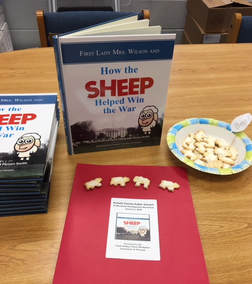 The Edith Bolling Wilson Birthplace Museum recently partnered with Pulaski County Public Schools to present a county-wide Professional Development In-service for fourth grade teachers. The January 5th workshop provided an overview of the life and legacy of Mrs. Wilson, focusing on her efforts as First Lady during World War I. Joyce Covey, a retired Pulaski County School teacher and volunteer for the Edith Bolling Wilson Birthplace Museum, served as the presenter for the workshop. The workshop incorporated the museum’s educational book, "How the Sheep Helped Win the War," which details when President and Mrs. Wilson placed a flock of sheep on the lawn of the White House to free grounds laborers for wartime duties. The wool from the sheep, named “White House Wool,” was auctioned off raising nearly $100,000 for the American Red Cross. The workshop provided an engaging framework for teachers to integrate the story into the classroom. The program’s teaching aids correlate with Virginia Standards of Learning and provide students with an introduction to World War I. Debbie Wilkerson, the Museum’s Education Coordinator, facilitated the workshop giving an overview of First Lady Mrs. Wilson and her place in history. Wytheville resident and retired educator, Betsy Ely, portrayed the First Lady, and shared information about her life in Wytheville and in the White House. This school year, each fourth-grade student in Pulaski County Schools will receive a copy of the museum’s educational book. Mrs. Elinor Farmer, a member of the Pulaski Friends of the Library, organized funding for the Professional Development Day. Area businesses and organizations supporting the outreach program and book distribution included: Friends of the Pulaski County Library, Dublin High School Alumni Association, Count Pulaski DAR, Delta Kappa Gamma (Nu Chapter), Pulaski County Retired Teachers Association, The Coffee Grinder Restaurant, Dublin Lions Club, Carla Hallstead, Dr. Holly Welty Miller, Linda Grey (in honor of Dorothy Sanchez), Elinor Farmer, and Judith Barr. Additionally, the Nu Chapter of Delta Kappa Gamma provided refreshments for the teachers. Delta Kappa Gamma is an international teachers society promoting professional and personal growth of educators and excellence in education. Several members of Delta Kappa Gamma attended the workshop and encouraged Pulaski County teachers to join their organization and learn more about scholarship opportunities available. The museum is currently expanding teacher and student programs. Please contact us about bringing this unique educational opportunity to your school! The Edith Bolling Wilson Birthplace Museum owns one of Virginia’s Top 10 Endangered Artifacts, according to the Virginia Association of Museums. Last year, the museum acquired First Lady Edith Bolling [Galt] Wilson’s original Automobile Operator's Permit, and is seeking funds for conservation of the object through the program.
The museum’s document is one of ten unique artifacts from across the state and spanning Virginia’s extensive history from the 1700s to the 20th century that was chosen following a thorough review process by an independent selection committee of collections professionals from partner organizations, such as the Library of Virginia, Preservation Virginia, Virginia Conservation Association, and Virginia Department of Historic Resources. The complete list of artifacts and contact information for each honoree can be found at Virginia's Top 10 Endangered Artifacts webpage. In 1904, Edith Bolling Galt became the first woman licensed to operate an electric car in Washington, D.C. Like many other early women drivers with independent methods of transportation, Edith questioned gender roles and societal expectations. Edith’s recollections of driving her Columbia Elberon Victoria Mark XXXI are relayed in her 1939 autobiography, "My Memoir." Wilson scholars note that when police officers in Washington recognized the future First Lady driving, they would stop traffic and obligingly wave her through street intersections. The Operator’s Permit was issued on September 7, 1904 by the Office of the Commissioners in Washington, D.C. At that time Edith was married to her first husband, Norman Galt, owner of Galt & Bro. Jewelers, a prominent business in Washington D.C. The document indicates that Mrs. Galt was authorized to operate a vehicle of the “electric type.” The cost of the vehicle amounted to $1600 in 1904 (equivalent to about $44,000 in 2017). This particular model was marketed to women and advertised as a carriage for “light pleasure service,” ”park riding,” and “social functions.” It would reach speeds of up to thirteen miles per hour and run for forty miles on a single charge. The artifact, measuring 5.25 x 8.125,” is fragile and in poor condition with separation, staining, and yellowing due to increasing levels of acidity. The object has been adhered with scotch tape for many years, causing more damage to the document. Its current condition prevents it from being on display. With conservation, the museum hopes to permanently display the object and create educational and exhibition content focusing on early women drivers and electric cars. Shiloh Holley, Executive Director of the Edith Bolling Wilson Birthplace Museum, states that she is thrilled about the designation. “This object not only speaks to the legacy of Edith Bolling Wilson as a forward-looking individual who, despite of her gender, embraced the world around her, but also relates to early twentieth century women's history, technology, and environmental issues.” After Norman Galt’s death in 1908, Edith Bolling Galt married President Woodrow Wilson in December 1915. She served as First Lady until 1921. Her birthplace home in Wytheville, Virginia now operates as a museum. As one of only eight historic sites across the country dedicated to the interpretation of a First Lady, the museum tells the story of the overlooked, yet vitally important role that Edith Bolling Wilson played in the White House at a pivotal moment during World War I. Museum hours are Tuesday - Friday 10:00 am - 4:00 pm and Saturdays 10:00 am. - 2:00 pm. For more information visit edithbollingwilson.org. Starting January 15, the public is invited to vote for Edith Bolling [Galt] Wilson’s Automobile Operator's Permit as their favorite artifact to help support its conservation efforts. Thanks to a generous donation from the Blandford Rees Foundation, the Virginia Association of Museum’s renowned program will for the first time provide conservation awards totaling nearly $19,000 to the honorees, which will be granted by the Selection Committee or through the outcome of the online public voting competition taking place January 15-24, 2018. The public is invited to help bestow $9,000 of these conservation awards by voting for their favorite endangered artifact. The two artifacts receiving the most votes will be recognized as the People’s Choice Awards and receive $5,000 and $4,000 respectfully to conserve their artifacts and care for its continued preservation. Those wishing to make a lasting impact on preserving Virginia’s history are encouraged to vote for their favorite artifacts during the online public voting competition. December 28 marks President Woodrow Wilson’s birthday, who was born in Staunton, Virginia in 1856. The date is also the anniversary of the death of Edith Bolling Wilson, his beloved second wife. Mrs. Wilson died in 1961, at the age of 89. On that day, she had planned to be the guest of honor at the dedication of the Woodrow Wilson Memorial Bridge, connecting Virginia with Maryland over the Potomac River. Yesterday, representatives from the museum stood alongside Bolling Family members and staff of the Woodrow Wilson House gathered to witness the annual wreath laying and prayer service in honor of Woodrow Wilson at the National Cathedral. The ceremony was presided by Reverend Doctor Olivia Hilton, who included a prayer written by President Wilson as the Nation was entering World War I: "Almighty God, ruler of all the peoples of the earth, forgive, we pray, our shortcomings as a nation; purify our hearts to see and love truth; give wisdom to our counselors, and steadfastness to our people; and bring us at last to the fair city of peace, whose foundations are mercy, justice, and goodwill, and whose builder and maker you are. AMEN." The United States Armed Forces commemorated President Woodrow Wilson's 161st birthday with a Presidential Armed Forces Full Honor wreath-laying ceremony. The wreath was placed by Brig. Gen. Douglas A. Sims II, director of operations readiness and mobilization, Department of the U.S. Army. Ambassador Hovhannissian of the Embassy of Armenia to the United States also honored President Wilson with a floral tribute sporting the Armenian flag. President Wilson played a special role in the history of Armenia. Through his leadership, Wilson arbitrated the boundary between the First Armenian Republic and Turkey as determined by the treaty of Sevres in 1920. He is also remembered for his efforts to save hundreds of thousands refugees and orphans after the Armenian Genocide. A special orchid tribute to First Lady Edith Bolling Wilson was provided by Chadwick & Son Orchids Inc of Richmond, Virginia. President Woodrow Wilson and Edith Bolling Wilson are the only presidential couple buried in Washington, D.C., and they are both interred at the National Cathedral. You can watch a live feed of the ceremony provided by the U.S. Army here. Photos courtesy of Edith Bolling Wilson Birthplace Foundation, Woodrow Wilson House, Sarah Andrews, and the Embassy of Armenia to the United States. This past weekend, we celebrated Edith Bolling Wilson’s 145th Birthday by hosting two very special events.
Exhibition Opening On Saturday, the museum welcomed eighty guests to the opening of the new exhibition, "World War I: From Wytheville to the White House...and Abroad.” This exhibition serves to present the First Lady in a scholarly-light by detailing her participation in and contributions to America’s effort in World War I. Throughout the day, special VIP tours were given, including a talk by exhibition advisor Dr. Lynn Rainville, a historian who specializes in Virginia’s role in World War I. An Orchid Blooms The following day over 175 guests gathered at Loretto, one of Wytheville’s finest historic homes, to honor the life and legacy of First Lady Edith Bolling Wilson. The event served as the official release party for a new hybrid Cattleya propagated by Chadwick and Son and named after the First Lady. On display at Loretto, was a pop-up exhibit of twenty-five watercolor paintings of local historic homes, created by local artist Beth Pendleton over the past thirty years. The distillery A. Smith Bowman sponsored a bourbon tasting bar (Mrs. Wilson was known to occasionally partake of Bowman’s). The President and Mrs. Wilson were also in attendance (portrayed by Betsy Ely and Jim Gearhart). We thank everyone involved for making Edith Bolling Wilson’s 145th birthday so special! Please note that the Run For Peace has been cancelled.  To commemorate the centennial of the United States’s involvement in World War I and to recognize our veterans, the Edith Bolling Wilson Museum will host a Run for Peace on November 11, 2017. One hundred years ago, while Edith Bolling Wilson was serving as First Lady, the United States entered World War I. Edith Bolling Wilson promoted her husband’s vision for peace, set an example for homefront conservation movements, and supported Allied troops. Through this work, Edith Bolling Wilson became the mother of modern First Ladies as she focused more on politics and social issues rather than serving as a traditional White House hostess. The Run for Peace is a part of the museum's programming for the current exhibition “World War I: From Wytheville to the White House... and Abroad,” which focuses on the leadership and contributions of First Lady Edith Bolling Wilson during the war. The Run for Peace 5K Run/Walk will be held in Rural Retreat, Virginia at 9:00 am starting at the Emergency Services Building, adjacent to the Rural Retreat Wall of Honor. The event is open to all ages. Veterans will receive free registration and will be recognized for their service during a short program after the race. President and Mrs. Wilson, portrayed by Jim Gearhart and Betsy Ely, will be special guests and will greet runners as they cross the finish line. In November 1919, President Wilson proclaimed November 11th as a holiday to commemorate the Armistice signed the year before. Wilson stated: "To us in America, the reflections of Armistice Day will be filled with solemn pride in the heroism of those who died in the country’s service and with gratitude for the victory, both because of the thing from which it has freed us and because of the opportunity it has given America to show her sympathy with peace and justice in the councils of the nations." Today, Veterans Day honors all of those who served in the Armed Forces. The Run for Peace supports the Edith Bolling Wilson Museum’s educational programs and future restoration of the Bolling Home. Registration is open to the public. For more information or to register, visit edithbollingwilson.org/runforpeace. 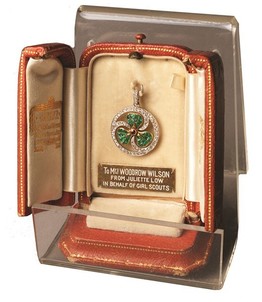 'Thanks Badge' given to Edith Bolling Wilson in 1917. 'Thanks Badge' given to Edith Bolling Wilson in 1917. One hundred years ago, Edith Bolling Wilson accepted an invitation to become the first Honorary President of the Girl Scouts. She was given this title by Girl Scout founder, Juliette Gordon Low, who started the scouting group five years earlier in Savannah, Georgia. Both Wilson and Low worked to support scouting service efforts nationwide in support of World War I. Girl Scouts tended to Victory Gardens, sold Liberty Bonds, worked alongside the US Food Administration, and volunteered for the American Red Cross. The Girl Scouts of America was established on March 12, 1912, by Juliette Gordon Low during the Progressive Era, a time when women in the United States could not vote. Low's first troop of 18 girls took part in a new outdoor and educational program for youth, which blazed trails and redefined what was possible for themselves and for girls everywhere. This week, the Girl Scouts of America will host a three day conference in Columbus, Ohio. ‘G.I.R.L. 2017’ offers sessions for every G.I.R.L. (Go-getter, Innovator, Risk-taker, Leader)™ who wants to stand up, take charge, and change the world, for her and for all of us. As a part of the new G.I.R.L. initiative, the Edith Bolling Wilson Birthplace will revise program offerings for Girl Scouts, with a new jewelry badge program for Juniors launching this month. Check out more programs for every G.I.R.L. at our Girl Scouts Program Page.  This week, we began a process to revamp and reconfigure the downstairs storefront museum to make room for a new exhibition. Opening as a part of First Lady Edith Bolling Wilson’s 145th Birthday celebrations, “World War I: From the White House…and Abroad” is the first comprehensive exhibition presented by the Edith Bolling Wilson Birthplace Foundation. The exhibition focuses on the leadership and contributions of Wytheville-native First Lady Edith Bolling Wilson during World War I and how her involvement in international and domestic affairs affected the home front. On view from October 14, 2017 - February 28, 2019, the exhibition corresponds to centennial of World War I. Frequently cited as one of the most controversial women of the twentieth century, Edith Bolling Wilson’s role as First Lady has been heavily scrutinized, particularly in the aftermath of President Wilson’s debilitating stroke in 1919. During the last seventeen months of Wilson’s presidency, Edith assumed the “stewardship” of the executive office, acting as the gatekeeper of the west wing and protector of her husband’s health and political legacy. Edith Bolling Wilson’s role as “presidentress” frequently overshadows her work as First Lady during the Great War. During this time, she functioned as President Wilson’s personal assistant, advisor, and confidante. Like few First Ladies before her, she became active in political causes to support and advance her husband’s policies. Heavily involved in domestic conservation efforts, Edith Bolling Wilson served as a model of wartime sacrifice at an important time in American history. President and Mrs. Wilson with wounded soldiers on board the U.S.S. George Washington, July 7, 1919. Courtesy of the Woodrow Wilson Presidential Library, Staunton, Virginia. Along with narrative text panels, the exhibition will feature a selection of photographs and artifacts on view from various private and public collections, including the President Woodrow Wilson House in Washington, D.C.
The exhibition will be on view to the public during museum open hours, Tuesday - Friday 10:00 am - 4:00 pm and Saturday 10:00 am - 2:00 pm. A special opening reception will be held on Saturday, October 14th starting at 9:00 am. The event will include a tour of the exhibition by Executive Director, Shiloh Holley, and complimentary donuts and coffee (an homage to the Salvation Army’s "doughnut girls," who in 1917 distributed fresh doughnuts to homesick soldiers in France). “World War I: From the White House…and Abroad” is funded in part by a grant from the Virginia Foundation for the Humanities. Additional promotional support is provided by the Virginia Tourism Corporation, Virginia World War I Centennial Commemoration Commission, Bolling Wilson Hotel, the Wytheville Convention and Visitors Bureau, and the Virginia Region of the American Red Cross. Lc Edith Bolling Wilson 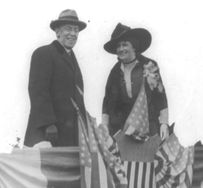 Written by Art Chadwick A version of this article was published in the September issue of Orchids Magazine. There was controversy in Washington, D.C. in the spring of 1915. It was rumored that President Woodrow Wilson had a love interest. The nation was still in mourning from the unexpected death of First Lady Ellen Wilson just eight months earlier. The President was also in mourning — until he met the widowed Edith Bolling Galt by a chance encounter in a White House stairwell. In order to woo his new sweetheart, he gave her a fresh orchid every day. Their whirlwind courtship included a highly publicized appearance at the World Series in which she wore a quadruple cattleya corsage. On Dec 28, 1915, Wilson married Edith and she became the new First Lady of the United States. During her tenure in the White House, Edith Bolling Wilson stood by her husband’s side, supporting his efforts for world peace, and eventually aiding in the nation’s conservation efforts during the First World War. Like everyone else, the Wilson’s observed “Gasless Sundays,” “Meatless Mondays,” and “Wheatless Wednesdays.” Woodrow Wilson was a popular president and had three cattleyas named after him — 1916 C President Wilson (Fabia x labiata), 1917 Blc President Wilson (Bc Mrs. J, Leemann x Lc Lustre), and the rare yellow 1918 Lc President Wilson (Thyone x C dowiana). But Edith was the orchid lover in the family, and she had no namesakes. That all changed last year, when Chadwick & Son Orchids reached out to the Edith Bolling Wilson Birthplace Museum to honor Mrs. Wilson with an orchid of her own. On October 15th, the museum will host their annual fundraiser celebrating Mrs. Wilson’s 145th Birthday. The event will serve as the release party for Lc Edith Bolling Wilson (William Romanoff x C dowiana). The new hybrid is a fall-blooming purple bred by A. A. Chadwick, who is known for his work with large flowered species and early hybrids. The seedlings, thus far, have yielded a broad spectrum of purple shades and are reminiscent of an earlier Chadwick cross, Lc Powhatan (Princess Margaret x C dowiana) which produced mostly lavenders as well as some stunning semi-albas and even a yellow. The Wilson cross is expected to produce some very dark seedlings and, maybe, some surprises. One parent, Lc William Romanoff (Cabazon x Morning Star), was originally bred in 1962, and named after the owner of Romanoff Greenhouses in Canterbury, Conn. William and his wife, Sally, operated the nursery from 1947 until 1988. Lc William Romanoff comes from a long line of dark breeding. The lineage is complex with 11 species being represented. Dark varieties of Cattleya warscewiczii, labiata, and lueddemanniana are prominent. The other parent of Lc Edith Bolling Wilson is the familiar yellow species, Cattleya dowiana which has been used heavily in breeding for over a century. Hybridizers use C dowiana for a variety of reasons — hoping to pass along the intense lip color (gold veining on a velvety purple throat), the sweet fragrance, or the blooming time, among other things. In September 1919, President Woodrow Wilson suffered a debilitating stroke that left him temporarily paralyzed. In the White House, the only two people with access to the President were his doctor and Edith. Scholars today debate the role of Edith Bolling Wilson in White House affairs during this period. In Edith’s autobiography, My Memoir, she referred to this time as her “stewardship” of the presidency, and decided which matters of state were important enough to bring to the bedridden president. Mr. Wilson never fully recovered from his stroke and died a few years after leaving office. Edith outlived her husband by nearly four decades and did not remarry. Until the end, Edith Bolling Wilson continued to promote her husband’s legacy. Arthur Chadwick is president of Chadwick & Son Orchids Inc. About the ‘An Orchid Blooms’ EventFor this year’s annual Edith Bolling Wilson Birthday Celebration, the museum is partnering with Chadwick & Son Orchids of Richmond, Virginia, to release a special hybrid orchid named to honor First Lady Edith Bolling Wilson.
The event will be held at the newly-restored historic home, Loretto, and will feature a display of Cattleya Orchids, Mrs. Wilson’s Namesake Flowers; an exhibition of Beth Pendleton's watercolor paintings of historic homes; hors d’oeuvres, a punch and bourbon bar; and special guests President and Mrs. Wilson portrayed by Jim Gearhart and Betsy Ely. Tickets and information. |
Visit
|
Museum Hours
Tuesday - Saturday 10:00 am - 4:00 pm If you would like to schedule a pre-arranged tour, please email or call at least one week prior to your date to visit. Email: info@edithbollingwilson.org Call: (276) 223-3484 |
Location
145 E. Main St., Wytheville, VA 24382 The museum is located in the heart of historic downtown Wytheville. |
Admission
There is no admission fee for individuals to visit the museum or tour the birthplace home; however, donations are greatly appreciated! Groups of 10 or more, please call ahead for information and arrangements. |
Edith bolling wilson birthplace museum
CONTACT |

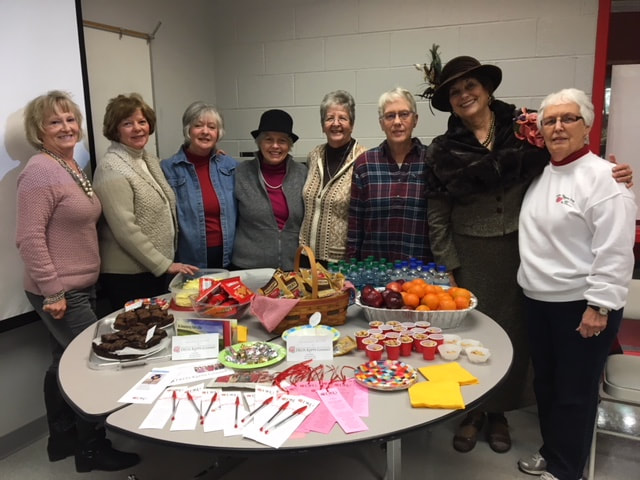
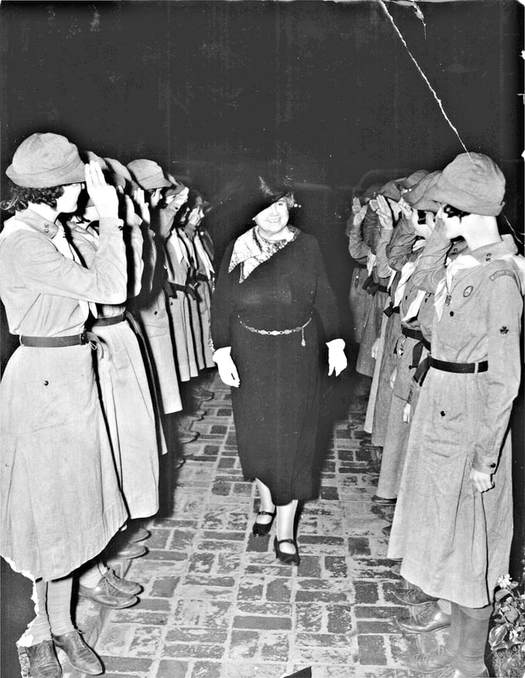
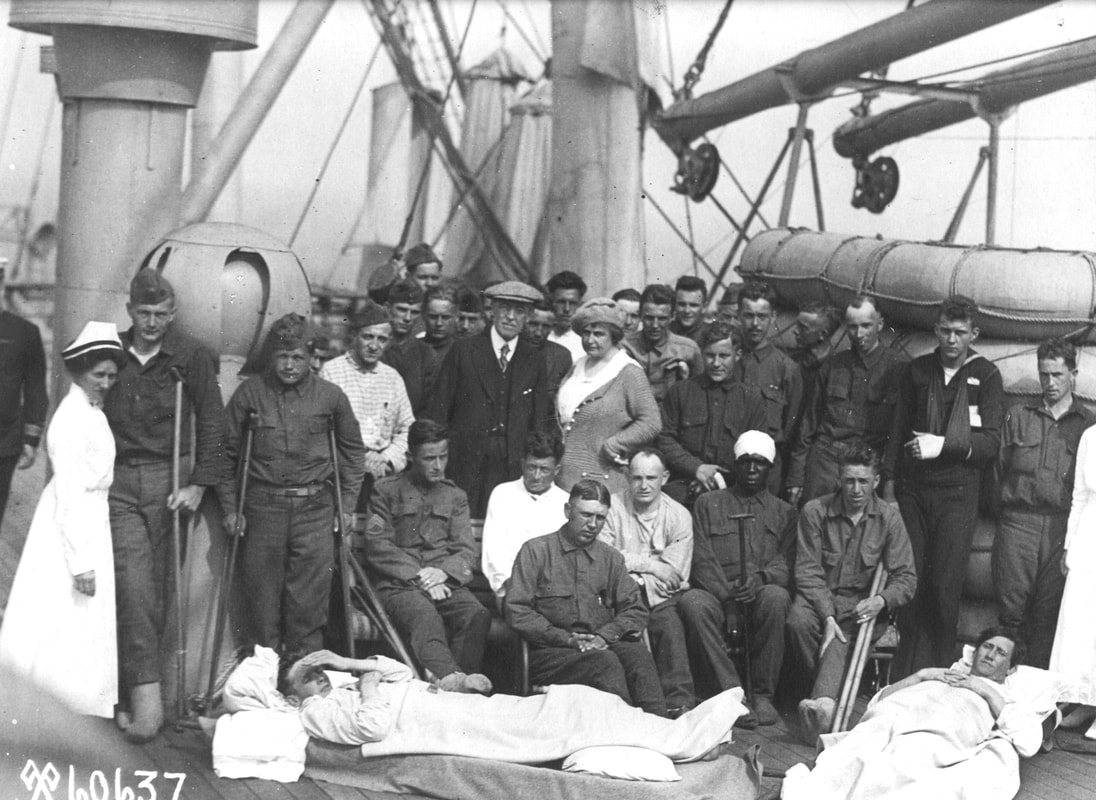
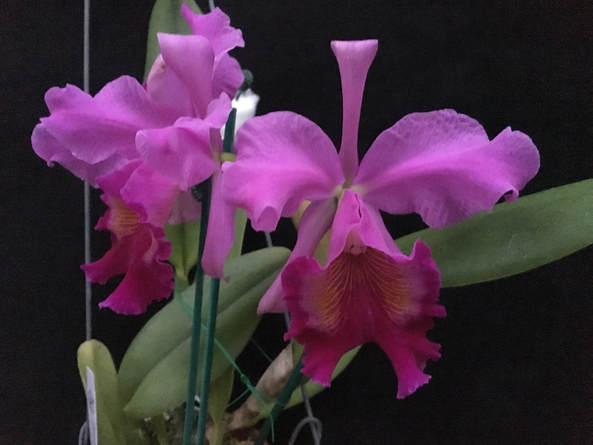
 RSS Feed
RSS Feed
